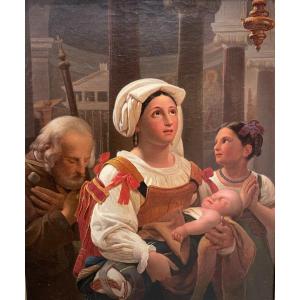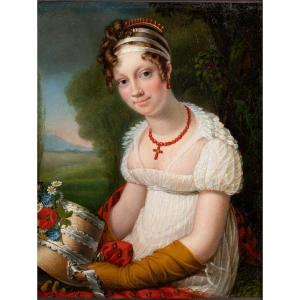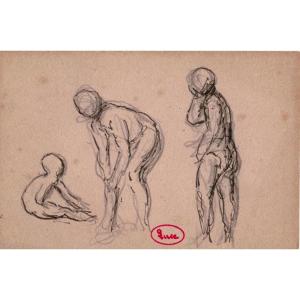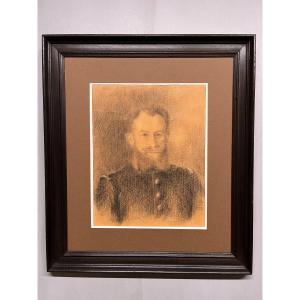Study of a woman
Circa 1794.
Black stone on paper.
H : 50.5 ; 43.2 cm.
This black stone on paper depicts a young woman in profile, facing right. The figure is nude, with curly hair tied with a large cloth ribbon tied at the back of her head. The subtle use of shadows and fine lines highlights the texture of the hair and fabric, adding depth to the image. The subject's expression is soft and concentrated, creating an atmosphere of calm and intimacy.
Forced to remain in France, despite winning the Prix de Rome in 1792, Charles Paul Landon stayed with his master, François-André Vincent, under the Directoire. Shortly before the turn of the century, he joined Jean-Baptiste Regnault's famous workshop.
Probably executed during the revolutionary period, this Study of a Woman in Black Stone bears witness to the influence of both Vincent and Landon. A contemporary of our work, Le Secret de Vincent (Figure 1), a chalk drawing from 1794, shares many of its technical and pictorial characteristics. The treatment of materials appears similar in the hair and kerchiefs of the protagonists. What's more, the same work on light and flesh can be seen in both drawings, despite the different techniques of chalk and black stone.
The young woman's attitude, her kerchief and the contrasting light treatment of the background seem freely inspired by the Master's Portrait of Marie-Gabrielle Capet (Figure 2), published as an engraving in 1786 by Gilles-Antoine Demarteau.
During the years 1794-1795, Landon executed several similar Études de femmes (Figures 3 and 4) on canvas. Their physiognomies and facial features are shared with the woman in our drawing. What's more, these studies reveal stylistic details in common with the latter, and bear witness to Landon's personal style. These include the hair in L'Été and the long eyelashes in La Femme couronnée de laurier, fine features found in our work.
























 Le Magazine de PROANTIC
Le Magazine de PROANTIC TRÉSORS Magazine
TRÉSORS Magazine Rivista Artiquariato
Rivista Artiquariato
